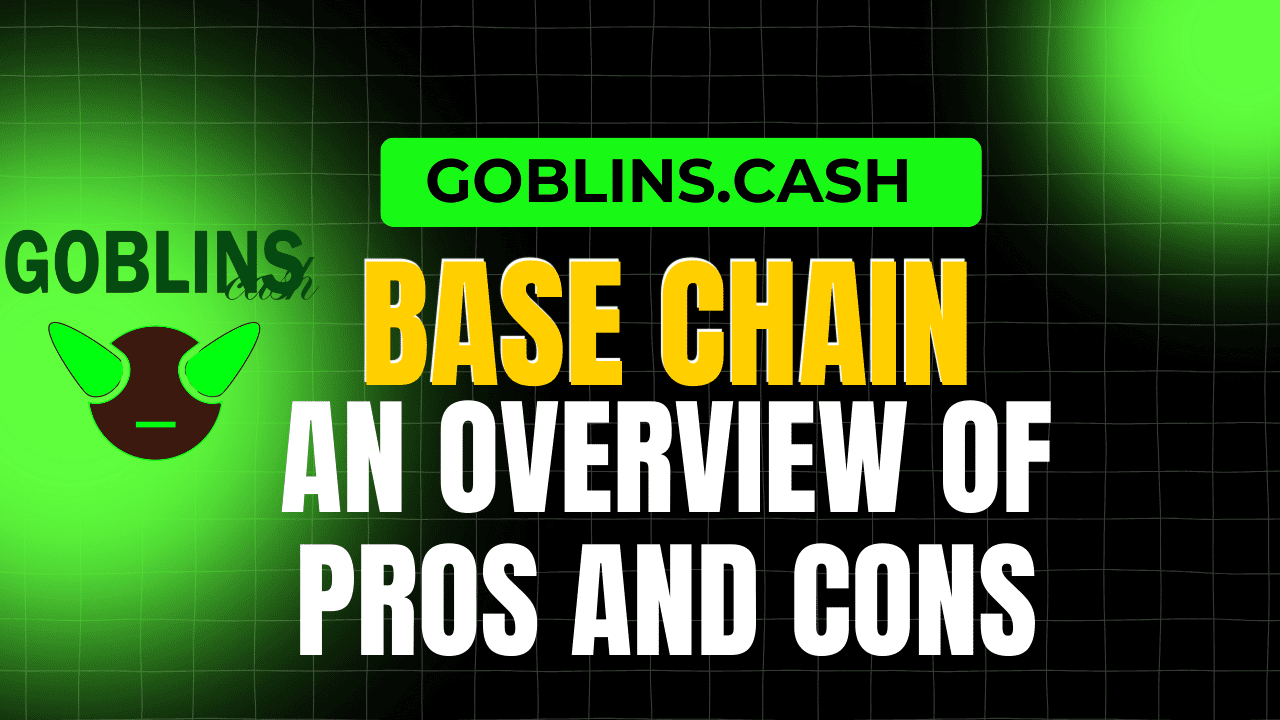Base Chain: An Overview of the Pros and Cons
The rise of blockchain technology has brought about various solutions aimed at enhancing scalability, security, and accessibility. Among these solutions is Base Chain, an innovative blockchain platform designed to provide a robust framework for decentralized applications (dApps). As with any technology, Base Chain comes with its own set of advantages and disadvantages. This article explores these aspects to provide a comprehensive overview of the platform.
What is Base Chain?
Base Chain is a blockchain network developed to offer scalability and efficiency for developers and users. By utilizing a modular architecture and integrating advanced consensus mechanisms, Base Chain aims to provide a high-performance platform for decentralized applications. It is particularly noted for its ability to handle large volumes of transactions with low latency, making it an attractive option for projects that demand speed and reliability.
Major Projects on Base Chain
Several notable projects have chosen Base Chain as their foundation, showcasing the platform’s versatility and appeal. Key examples of these projects can be found here.
What Differentiates Base Chain from Other Blockchains?
Base Chain sets itself apart from other blockchain platforms through several key features:
- Modular Architecture: Unlike monolithic blockchains, it employs a modular design, allowing developers to customize the platform to suit their specific needs. This flexibility is a significant advantage for projects with unique requirements.
- Energy Efficiency: While many blockchains face criticism for their high energy consumption, it utilizes a sustainable consensus mechanism that reduces its environmental impact. This approach appeals to eco-conscious developers and users.
- Interoperability: Base Chain’s native interoperability features enable seamless communication with other blockchain networks. This capability is a significant differentiator, fostering cross-chain collaborations and expanding the platform’s use cases.
- Developer Tools: The platform offers an extensive suite of developer tools and APIs, making it easier for developers to build and deploy applications. Its compatibility with popular programming languages further simplifies the development process.
- User-Friendly Transaction Costs: Base Chain’s low transaction fees make it an economical choice for both developers and end-users. This feature is particularly beneficial for applications that rely on frequent or microtransactions.
- Focus on Security: By integrating advanced cryptographic techniques and a secure consensus mechanism, Base Chain provides a high level of security, reducing the risk of attacks and vulnerabilities.
Pros of Base Chain
- High Scalability: It is designed to process thousands of transactions per second (TPS), making it one of the most scalable blockchain platforms available. This scalability ensures that the network can support the growing demands of users and developers without performance bottlenecks.
- Low Transaction Costs: The platform’s architecture minimizes transaction fees, making it an economical choice for developers and users. This feature is especially beneficial for dApps that rely on microtransactions, such as gaming or DeFi applications.
- Developer-Friendly Environment: Base Chain offers robust tools and APIs that simplify the development process. Its compatibility with widely-used programming languages lowers the barrier to entry for developers transitioning from traditional software development to blockchain.
- Interoperability: With built-in interoperability features, Base Chain facilitates seamless communication and transactions with other blockchain networks. This functionality is crucial for creating interconnected ecosystems and enabling cross-chain collaborations.
- Enhanced Security: By implementing advanced cryptographic algorithms and a secure consensus mechanism, Base Chain ensures a high level of security against malicious attacks. Its decentralized nature also adds resilience against single points of failure.
- Sustainability: The platform employs energy-efficient consensus mechanisms, reducing its environmental footprint compared to traditional Proof-of-Work (PoW) systems. This focus on sustainability aligns with the global push towards greener technologies.
Cons of Base Chain
- Centralization Concerns: While it touts its decentralization, some critics argue that its governance structure leans towards centralization. This perception could undermine the platform’s appeal to purists who value decentralized governance above all else.
- Adoption Challenges: Despite its technical capabilities, it faces stiff competition from established blockchain networks. Achieving widespread adoption requires significant efforts in marketing, partnerships, and community building.
- Complexity for New Users: While developers may find the platform’s tools and APIs beneficial, new users could face a steep learning curve. Simplifying onboarding processes and providing comprehensive educational resources will be crucial for addressing this issue.
- Regulatory Risks: As with all blockchain platforms, it is not immune to regulatory scrutiny. Changes in legislation or unfavorable regulatory environments could impact its growth and adoption.
- Dependence on Ecosystem Development: The success of Base Chain hinges on the growth of its ecosystem. Without a vibrant community of developers and users, the platform’s potential may remain untapped.
- Potential Security Vulnerabilities: Although it employs advanced security measures, no system is entirely immune to vulnerabilities. The platform must continually adapt to emerging threats to maintain user trust.
Conclusion
Base Chain represents a significant step forward in blockchain technology, offering a blend of scalability, efficiency, and security. Its low transaction costs and developer-friendly environment make it an appealing choice for building decentralized applications. With major projects like Aerodrome Finance leveraging its features, Base Chain is already demonstrating its potential.
What sets it apart is its modular architecture, energy efficiency, and focus on interoperability, making it a compelling alternative to other blockchain platforms. However, challenges such as adoption hurdles, centralization concerns, and regulatory risks must be addressed for its continued success.
As blockchain technology continues to evolve, the ultimate success of Base Chain will depend on its ability to address these challenges while leveraging its strengths. By fostering a strong ecosystem and maintaining a focus on innovation, Base Chain has the potential to become a key player in the blockchain space. For developers, users, and investors, understanding both the pros and cons is essential for making informed decisions about engaging with the platform.

